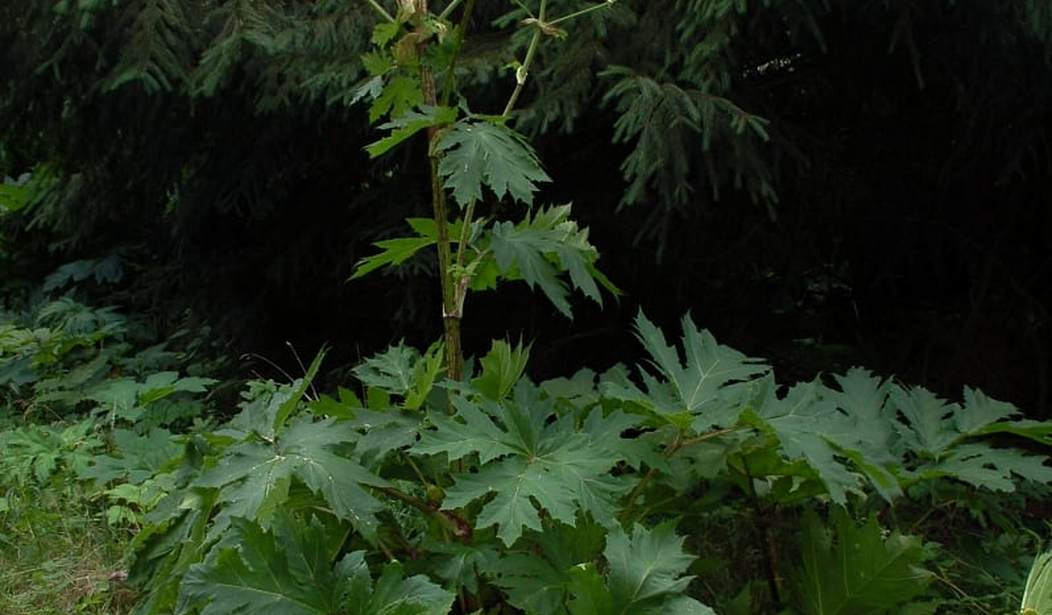If worrying about poison ivy wasn’t enough of a problem, now many of us have to worry about a plant that can cause blindness and give third-degree burns.
The giant hogweed, known to botanists as the heracleum mantegazzianum, contains sap that blisters and burns humans. If a person who has come in contact with the plant’s sap is then exposed to sunlight, something scary called phytophotodermatitis happens.
According to Wikipedia, phytophotodermatitis “is a skin condition caused by a chemical reaction which makes skin hypersensitive to ultraviolet light.” Those who have this multi-syllable condition due to exposure to giant hogweed experience redness and itching. Blisters begin to form as the skin begins to burn. If the sap gets in the eyes, temporary blindness can occur.
All in all, the giant hogweed is a nasty plant.
Unfortunately, the giant hogweed is rapidly spreading across the Mid-Atlantic, Northeast, Northwest, and Great Lake regions. The Center for Invasive Species and Ecosystem Health maintains a map online that you can check to see if your state has been invaded by the dangerous plant. However, it should be noted that at the time of the writing of this article, the University of Georgia-based researchers haven’t updated their map to include Virginia, the most recent state in which the plant has been spotted. In other words, just because your state isn’t on the map, that doesn’t necessarily mean that your nature hikes will be free of plant-induced burns and blindness. It may mean that the Center for Invasive Species and Ecosystem Health hasn’t updated the map yet.
The state of New York has a giant warning on their website urging residents, “Do Not Touch This Plant!”
The website also contains some helpful information about what to do if you come in contact with the plant: “Immediately wash the affected area thoroughly with soap and water and keep the area away from sunlight for 48 hours. This plant poses a serious health threat; see your physician if you think you have been burned by giant hogweed.”
And New York has some tips on how to identify giant hogweed:
Giant hogweed is a biennial or perennial herb in the carrot family (Apiaceae) which can grow to 14 feet or more. Its hollow, ridged stems grow 2-4 inches in diameter and have dark reddish-purple blotches. Its large compound leaves can grow up to 5 feet wide. Its white flower heads can grow up to 2 1/2 feet in diameter. Please refer to the Giant Hogweed Identification page for further help. Some other plants look very similar.
New York’s website also has some posters (toward the bottom of their page) warning about giant hogweed that you can print off and post around your town. Considering the possible effects from touching giant hogweed, warning your neighbors may be a good idea.









Join the conversation as a VIP Member